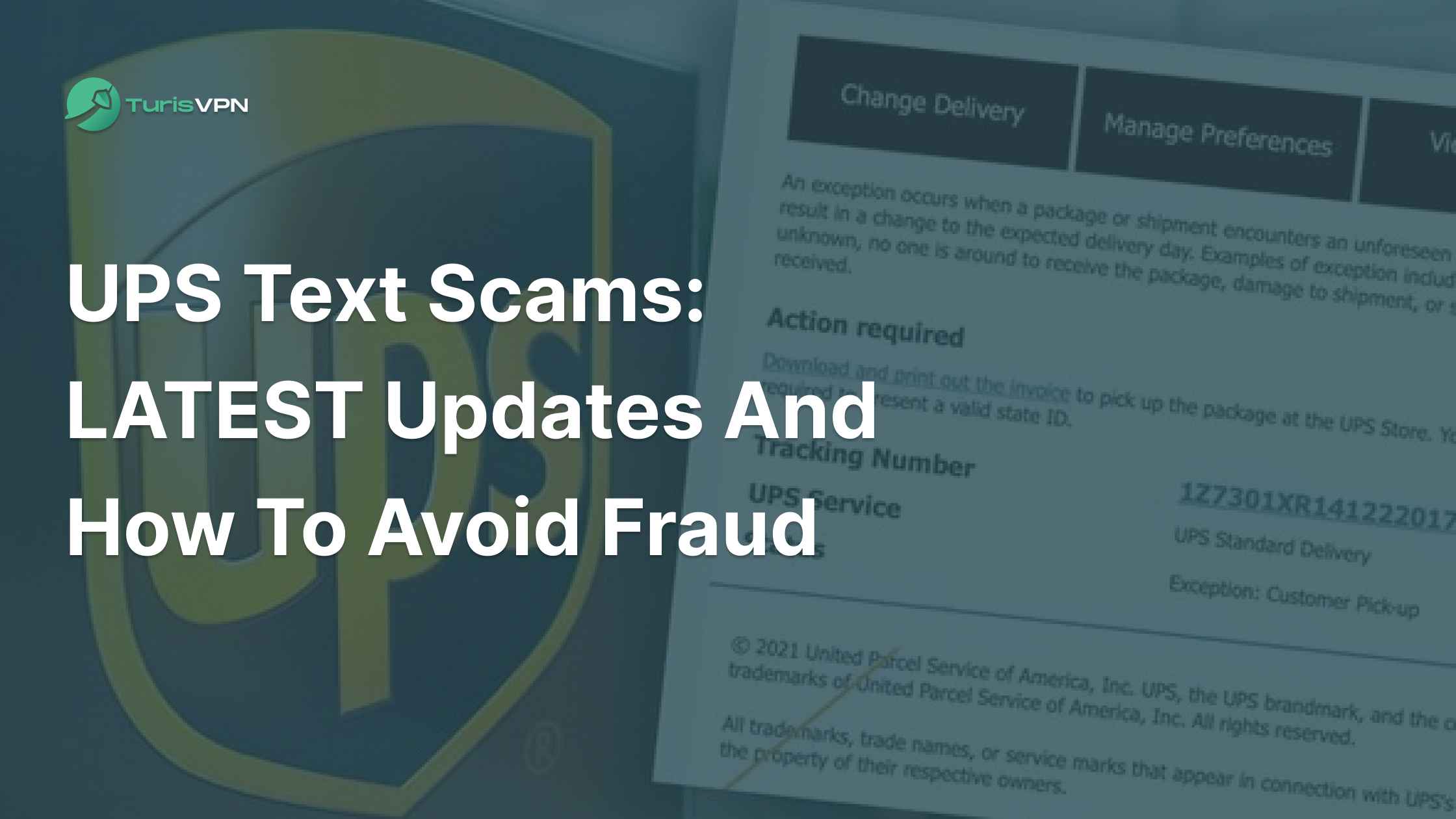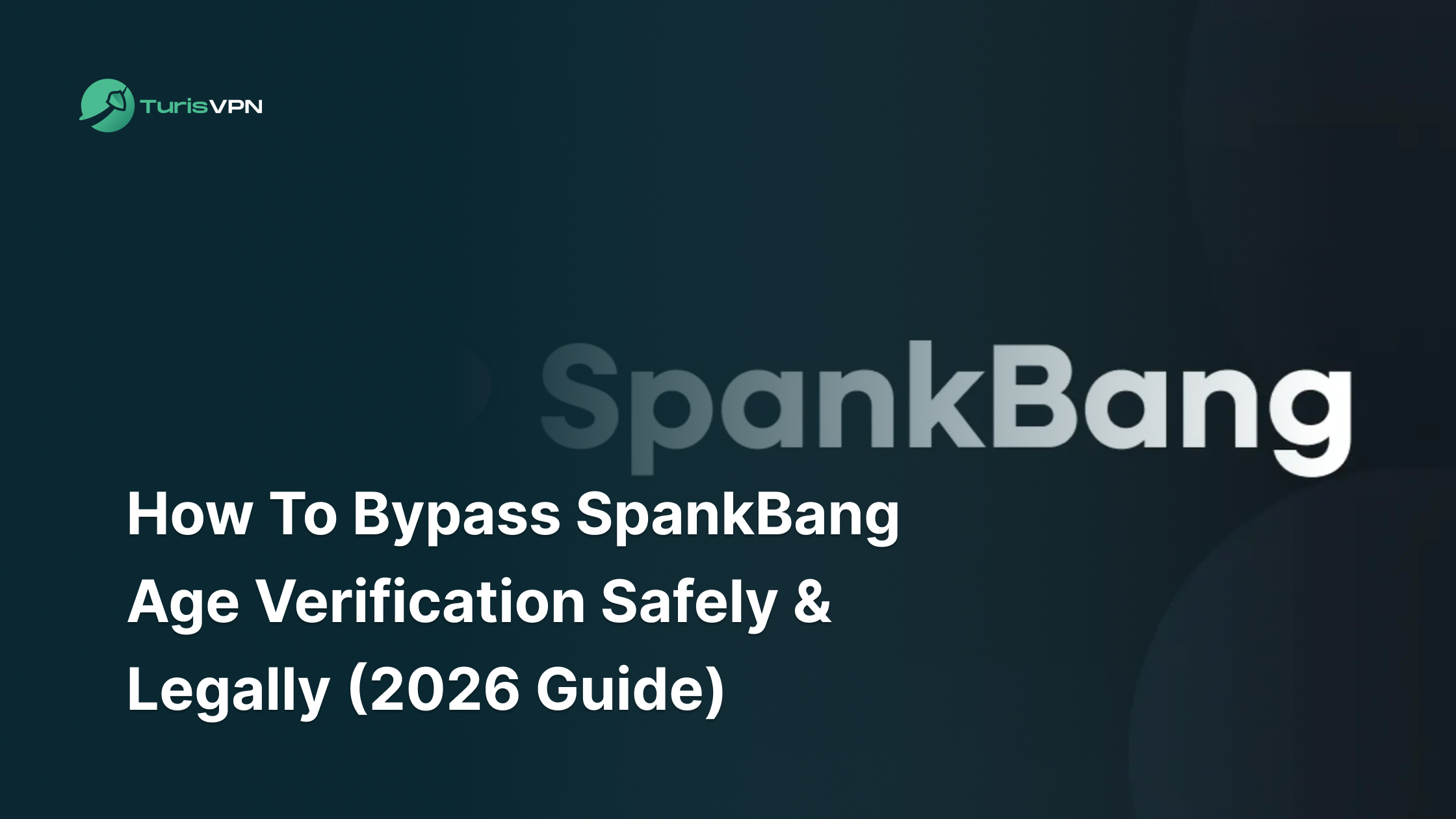Let’s paint a picture of how these UPS text scams hit close to home. You’re waiting on that online order for a crucial work supply, something you really need. Then, ping – a text from “ups fraud emails” saying there’s a problem, a delivery snag. You might wonder, does UPS send text messages with links? Many worry about fake UPS delivery attempts and whether UPS texts you about a package is legitimate. That’s exactly what they want.
This article is your shield against the rising tide of UPS text scams. You’ll learn how to spot the telltale signs of a fake message, from suspicious links to urgent, demanding language. You might even question, are free shipments legit if offered unexpectedly via text. But more importantly, we’ll equip you with actionable steps to safeguard your personal information and financial security.
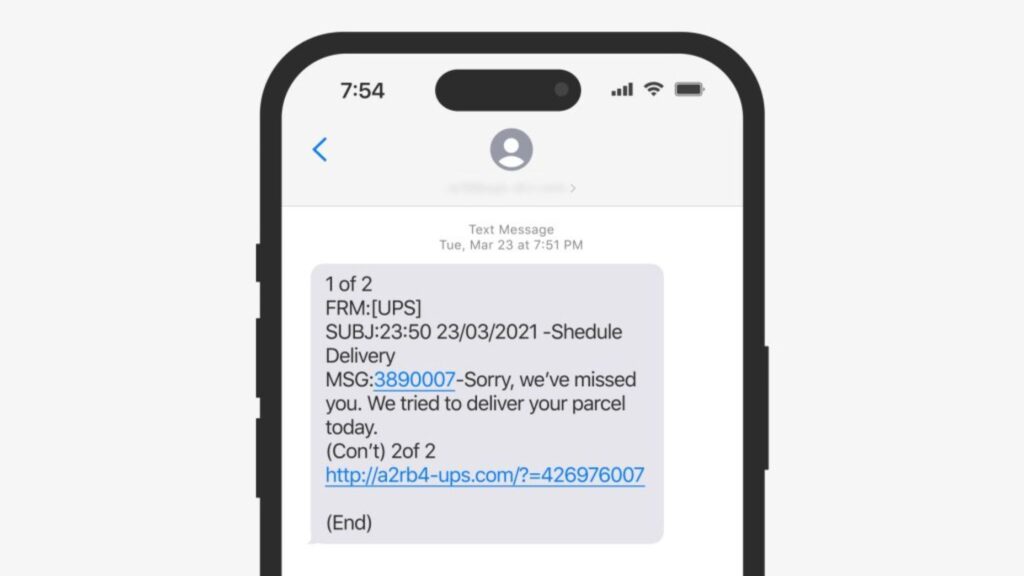
What Are UPS Text Scams?
A UPS scam is a trick where fraudsters pretend to be from UPS using fake text messages (smishing) or emails, frequently saying there’s a problem with a delivery.
These messages usually have a harmful link that takes people to a false UPS website made to get their private information, such as passwords and credit card numbers, or to put damaging software on their phones. This tactic echoes the principles of classic online scams, such as the infamous Nigerian Prince scam.
How does it work?
- The Initial Lure: You’ll get an unexpected text seemingly from UPS. This message usually hints at a problem with a parcel delivery, a missed attempt to drop off a package, or a need to adjust your delivery instructions.
- The Enticement: Almost always, the message will contain a web link. While it might appear to lead to the real UPS site, it’s actually a gateway to a scammer’s control center.
- The Deceptive Site: Clicking the link will likely take you to a phony website designed to steal your sensitive data. They might ask for things like:
- Your account login information, like usernames and passwords.
- Your financial details, such as credit card numbers or bank account specifics.
- Your personal identification, including your home address, phone number, or birth date.
- The Potential Harm: Once the fraudsters have this information, they can use it to:
- Drain your finances by making unauthorized purchases or accessing your bank accounts.
- Commit identity theft by opening new accounts or engaging in illegal activities using your identity.
- Infect your phone with harmful software that can monitor your activity, steal your data, or even lock you out of your device.
Security specialists highlight that scammers often capitalize on current events or peak seasons, such as the holiday shopping period, when people are anticipating more package arrivals. Just as fraudulent activities can occur on online marketplaces, leading to financial losses, as discussed in this article about OfferUp scams.
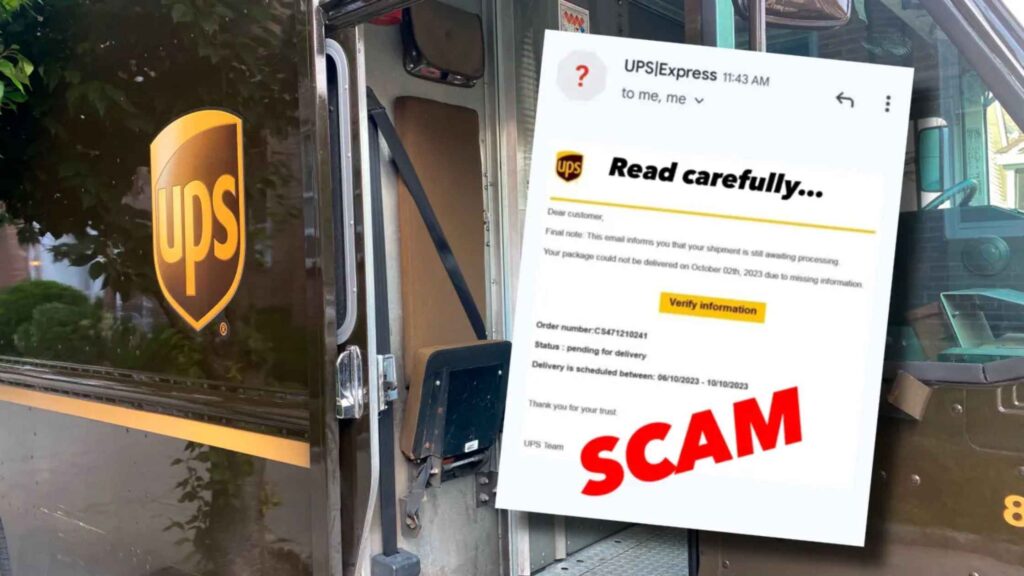
“Red Flags” To Identify UPS Text Scams
Being aware of certain red flags can significantly reduce your risk of falling victim to a UPS text scams. You might wonder, does UPS send text messages with links? Here’s a checklist to help you identify these fraudulent messages:
| Red Flag | Description |
| Unexpected Communication | Receiving a text when you aren’t expecting a package or haven’t signed up for updates. |
| Requests for Money or Personal Information | Any text asking for payment, bank details, passwords, or social security numbers. |
| Sense of Urgency or Threats | Messages that pressure you to act immediately with claims of missed delivery or package return. |
| Suspicious Links | URLs that don’t start with https://ups.com, https://billing.ups.com, https://go.ups.com, or http://links4.upsemail.com, or use link shorteners. |
| Grammar and Spelling Errors | Noticeable typos, poor sentence structure, or awkward phrasing. |
| Unusual Phone Numbers | Texts from regular phone numbers or numbers that are not the official UPS shortcodes (69877, 94601, 48515 in the US). |
- Unexpected Communication: If you receive a text message claiming to be from UPS and you are not expecting a package, you should be very suspicious . Legitimate text messages from UPS are usually triggered by a specific delivery that you are tracking or for which you have requested updates. Therefore, any unsolicited message, particularly one that includes a link, should be treated with caution.
- Requests for Money or Personal Information: UPS will never ask for payment or sensitive personal information such as bank account details, passwords, or social security numbers through a text message . Be highly suspicious of any text message that asks you to pay a “delivery fee,” “customs fee,” or any other type of payment . It’s important to know that does UPS charge for redelivery via a text message is almost certainly a scam.
- Sense of Urgency or Threats: Scam text messages frequently use urgent language to pressure you into acting quickly. These scams often play on fears of a UPS fake delivery or the need to resolve a supposed issue. These messages might also include deadlines or threats to create a sense of panic .
- Suspicious Links: Carefully examine the link provided in the text message. Official UPS website addresses will always begin with https://ups.com, https://billing.ups.com, https://go.ups.com, or http://links4.upsemail.com . Scammers often use links that look similar but contain slight variations or misspellings, such as “upss.com” or “tracking-ups.com”
- Unusual Phone Numbers: In the United States, legitimate text messages from UPS should come from specific shortcodes: MYUPS (69877), 94601, or 48515. Text messages received from regular phone numbers, especially those with area codes you don’t recognize or numbers that seem to originate from different countries, are likely to be scams .
Official UPS Text Message Numbers (for the US): 69877, 94601, 48515
7 Common Examples Of UPS Text Scams
These scams, often referred to as “smishing” (SMS phishing), can lead to financial loss, data theft, and a significant amount of stress.
1. Fake Package Delivery Notifications
This is perhaps the most common type of UPS text scams. You receive a text message claiming that a package delivery attempt has failed or that there’s an issue preventing delivery. The message often urges immediate action, such as clicking a link to reschedule the delivery or provide additional information.
How it works: Scammers bank on the high volume of packages being shipped daily. Many people are expecting deliveries, making this a believable scenario. The provided link, however, rarely leads to the official UPS website. Instead, it might direct you to a fake website designed to steal your login credentials, credit card details, or other personal information.
Example: “UPS: Your package could not be delivered today. Please reschedule your delivery here: [malicious link]”
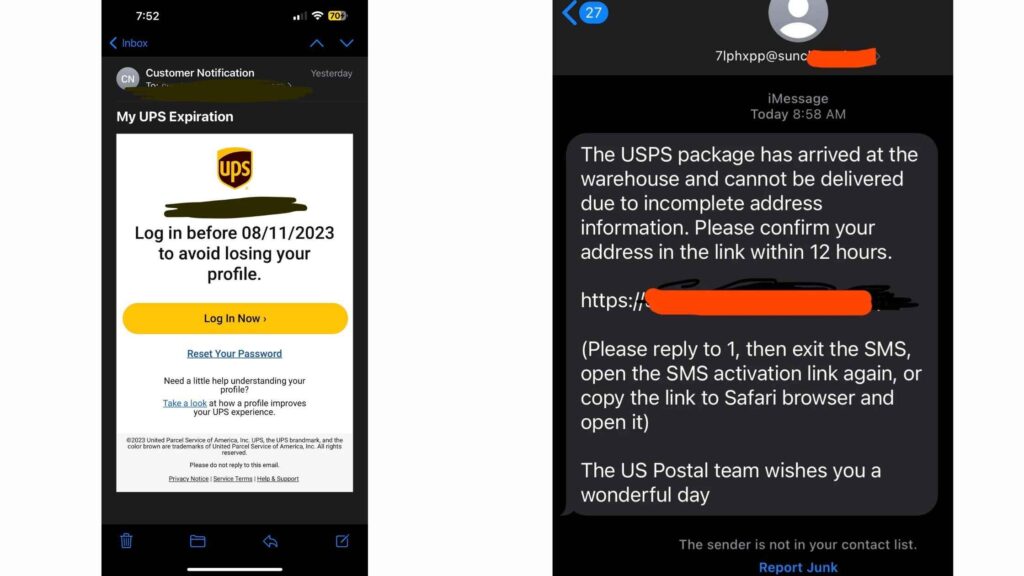
2. Fake Shipping Fees
Another common tactic involves texts claiming that you owe additional shipping fees before your package can be delivered. These messages often create a sense of urgency, threatening to hold or return your package if the fee isn’t paid immediately.
How it works: Scammers prey on the fact that sometimes unexpected shipping fees can occur. The text message will typically include a link to a payment page that looks deceptively like the official UPS payment portal. However, any payment information you enter on these fake pages goes directly to the criminals.
Example: “UPS Alert: Your package requires an additional shipping fee of $2.99. Pay now to avoid delays: [malicious link]”
3. Phishing for Personal Information
Some UPS text scams are more direct in their approach, explicitly asking for your personal information under the guise of verifying your identity or updating your account details.
How it works: These messages might claim that there’s an issue with your account or that UPS needs to confirm your address or phone number. The provided link will lead to a fake form where you are prompted to enter sensitive information like your name, address, phone number, email address, and sometimes even your social security number or bank account details.
Example: “UPS Urgent: We need to verify your address to complete your delivery. Please update your information here: [malicious link]”
It’s worth noting that similar deceptive practices are used in other online schemes, such as those involving Survey Spotter, prompting users to question the legitimacy of seemingly harmless offers.
4. Phishing Sites via UPS Text Scams
The links provided in these scam texts often lead to sophisticated phishing websites that mimic the official UPS website. These fake sites are designed to steal your login credentials, payment information, and other sensitive data.
How it works: The scammers invest time in creating websites that look remarkably similar to the real UPS site, complete with logos, branding, and a familiar layout. When you enter your username and password on these fake sites, you are unknowingly handing over your account information to the criminals. They can then use this information to track your real packages, potentially intercept them, or access your stored payment details.
Example: Official UPS websites usually have a secure connection (HTTPS) and a domain name that clearly belongs to UPS. Scam websites often use slightly altered or completely different domain names.
5. Malware-Infected Scam Texts
In more malicious scenarios, the links in UPS text scams can lead to websites that automatically download malware onto your phone. Keeping your operating system and apps up to date also patches security vulnerabilities that scammers might exploit.
How it works: Once installed, this malware can perform various harmful actions, such as stealing your contacts, tracking your location, accessing your messages and emails, or even recording your keystrokes. This can lead to significant privacy breaches and financial losses.
Example: “UPS: There was an error processing your delivery. Download the updated tracking app here: [malicious link]”
6. Refund Scams
Another variation involves texts claiming that you are due a refund for an overpayment or a delivery issue. Legitimate refunds from UPS are usually processed through your original payment method or require you to log in to your official UPS account.
How it works: These messages typically include a link to a form where you need to enter your bank account details or credit card information to receive the supposed refund. In reality, this information is used to make unauthorized withdrawals or charges.
Example: “UPS Notification: You are eligible for a refund of $15.75 due to a shipping error. Claim your refund here: [malicious link]”
7. Prize or Gift Scams
Less common but still present are text messages claiming that you have won a prize or a gift related to a UPS delivery. If you haven’t entered any contest or promotion, it’s highly unlikely that you’ve won a prize related to a UPS delivery. Exercise caution and avoid clicking on suspicious links.
How it works: These scams aim to lure you into providing personal information or paying a “small processing fee” to claim your supposed prize. Of course, there is no prize, and your information or money will be stolen.
Example: “Congratulations! Your recent UPS delivery has won you a special prize! Claim it here: [malicious link]”
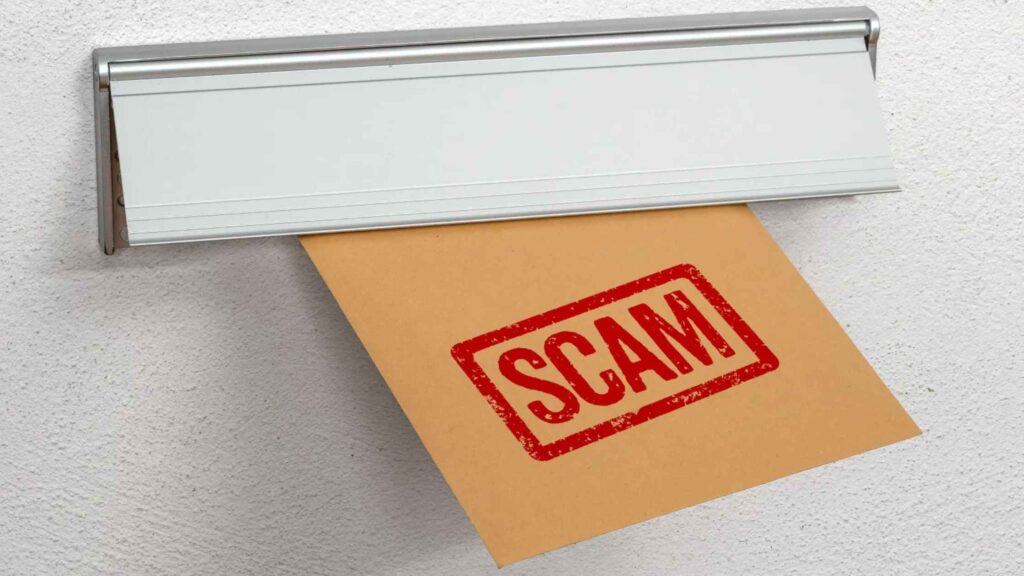
What To Do If I Clicked On UPS Text Scams?
If you receive a text message that you suspect might be a scam, it’s crucial to take the following steps to protect yourself:
- Don’t Provide Any Information: Never share personal details, financial information, or login credentials in response to a suspicious text message .
- Verify Through Official Channels: If you are expecting a package, go directly to the official UPS website (ups.com) or use the official UPS mobile app to track its status . Manually enter the tracking number if you have one.
- Contact UPS Directly: Contact UPS customer service through their official website or phone number to verify its legitimacy, if you are unsure about a text message .
- Change Passwords: If you entered login details on a fake website, change your passwords for those accounts immediately .
- Report the Scam: Forward the suspicious text message to UPS at [email protected] or [email protected] . You can also report it to the Federal Trade Commission (FTC) at IdentityTheft.gov.
- Run a Malware Scan: If you clicked on a link and entered information, it is a good idea to run a malware scan on your device .
- Consider a Credit Freeze: Consider placing a credit freeze on your credit report to help prevent identity theft if you provided sensitive personal information like your Social Security number.
- Alert Your Bank: If you provided payment information, contact your bank or credit card company immediately to report the incident .
How To Protect Yourself From UPS Text Scams?
Never, and I mean never, just click on a link in an unexpected text. These links frequently redirect to malicious websites designed to compromise your personal data. Here’s a fact I’ve learned over the years: real companies like UPS will never ask for your sensitive personal information – things like your social security number or bank details – through a text message. If you get a text asking for this, it’s a scam, plain and simple.
I’ve seen countless variations of these scams. The first rule of thumb is simple: if a text message from “UPS” pops up out of the blue, treat it with extreme caution. To verify any communication, navigate directly to the official UPS website or mobile application by manually entering the URL or accessing the official app.
For an added layer of security when browsing online, consider using a service like TurisVPN, which can help encrypt your internet connection and protect your data from potential threats.
Report Suspicious Texts:
- Forward to 7726 (U.S. and Some Regions): In the United States and some other regions, you can forward suspicious text messages to the shortcode 7726 (SPAM) to report them to your mobile carrier.
- Report to UPS: You can also report the scam to UPS through their official channels, which helps them track and address these fraudulent activities. Look for a “Report Fraud” or “Security” section on their website.
- File a Complaint with the FTC: In the U.S., you can report scams to the Federal Trade Commission (FTC) at ReportFraud.ftc.gov.
Bottom Line
Remember to always watch out for unexpected texts or emails claiming to be from UPS, especially those asking for money or personal details, or containing links. Always go directly to the official UPS website or app to check your deliveries and never click suspicious links. Following our clear list of steps to take if someone has clicked on a scam link offers immediate and practical guidance in a potentially stressful situation.
FAQs
Q1. Are there UPS text scams?
Yes, there are numerous UPS text scams (also known as “smishing”). These can pretend there’s a problem with your delivery, ask you to pay unexpected charges, or try to trick you into revealing your private information through harmful website links. Staying alert to these kinds of unsolicited texts is key to protecting yourself.
Q2. Does UPS charge for redelivery?
UPS may charge for redelivery in certain circumstances. Typically, the first delivery attempt is included in the shipping cost. However, if a package cannot be delivered and requires multiple redelivery attempts due to reasons such as the recipient not being available or providing an incorrect address, UPS might impose a redelivery fee. It’s best to refer to the official UPS website or contact their customer service for detailed information regarding redelivery charges in your specific situation.
